Philadelphia, also recognized as the ‘City of Brotherly Love,’ has a rich history with a distinctive background.
Philly was initially settled by Native American Tribes, dating back to 8000 B.C.
By the 17th Century, merchants from the Netherlands, England, and Sweden had established trade stations in the Delaware Valley area. In 1681, Charles II of England handed William Penn a license for the Pennsylvania colony.
Penn’s colony prospered, and Philadelphia quickly became the most significant shipbuilding hub in the colonies. Among those drawn to the city was Benjamin Franklin, who became the publisher of The Pennsylvania Gazette in 1729. With all the opportunities and value the city brought, the possibilities of corruption and tensions were bound to follow suit.
In the First World War, Philadelphia’s shipbuilding industries were major suppliers to the Allies. But during those years, specifically 1918 to 1919, the city succumbed to being a heart of the Spanish Flu pandemic, with over 500,000 Philadelphian citizens contracting the deadly flu.
Following the Second World War, new roadways made it possible for employees to access living spaces outside of the city. But the drawback was that Philadelphia lost population and employment due to suburbanization and industrial decline, and several of the city’s renowned shipyards were forced to close.
RECENT RESEARCH & SURVEYS
Philadelphia has been a target for various onslaughts of corruption and daunting controversies, mainly regarding the officials and politicians running the city and its fluctuating economy. The general population of Philadelphia has undeniably taken the worst hit from such setbacks.
According to the current federal poverty rules, a family of three should live on $21,720 per year. This number applies whether the family resides in Provo, Utah, or Philadelphia, Pennsylvania. That is a ludicrous sum for much of the country.
A family living beneath the poverty line in Philadelphia, where the typical rent for a two-bedroom apartment is roughly around $1,500, spends most of their income on housing. Even an $800-per-month apartment would leave little under $1,000 for food, utilities, health insurance, transportation, child care, debt service, education, and other living expenses. Thus, many families are left with inadequate wages to fulfill their daily necessities to qualify for extra aid.
The Self-Sufficiency Standard, a system that describes the amount of salary required to satisfy fundamental necessities, demonstrates that far too many Philadelphian families struggle with merely being able to keep their families fed, housed, educated, and healthy. Structural racism, the gender pay gap, and general income inequality take a toll on many.
The incapability to afford a place to live and slipping outside of the system make maintaining housing criteria more difficult. Mental illness can sometimes be a contributing factor towards becoming homeless. Many new individuals have become homeless as a result of the opioid crisis. Because of development and fewer public locations for individuals to live discreetly, homelessness in Center City is more pronounced now. Kensington has a concentration, but overall it is a city-wide problem.
In a 2015 Survey, Public Health Management Corporation discovered impoverished Philadelphians were twice as likely to report their general health as poor or fair. They had comparatively higher rates of chronic diseases, such as diabetes and fluctuating blood pressure than other residents. Poor regions of the city had shorter life expectancy than wealthier regions. According to the Pew Research Center, as many as double Philadelphians who grew up in deficiency as children reported being neglected or abused as those who were raised in better-off families.
According to the U.S. Census Bureau’s American Housing Survey of 2013, four out of every five underprivileged homes in Philadelphia resided in the market of private housing without rent subsidies. Just 2% of all low-income students enrolled in public schools attended elementary or middle schools with high accomplishment ratings.
Deprived families are liked to attend Philadelphia public schools, as they can’t afford private. According to the study, 70% of underprivileged Philadelphians stated their children attended city public schools instead of public charter schools or private schools; 46% of Philadelphians without financial struggle answered the same. Almost all of the low-income households spent more than 30 percent of their income on rent, mortgage, and utility bills, and 80 percent paid at least 50 percent of their expenses to such issues.
According to another research conducted in 2016, 76 percent of all violent crimes reported in Philadelphia happened in communities with at least 20% of the population being impoverished. Violent crime was approximately three times more frequent in regions with at least 40% poverty rates than in areas with less than 20%.
According to other surveys, a considerable proportion of Philadelphians have struggled with poverty their whole lives. Studies have shown that exposure to violent crime, poor schooling, physical and emotional stress, and other factors, particularly during youth and young adulthood, make it harder to climb the economic ladder.
The findings also shed insight on the extent to which certain Philadelphians’ poverty is an intergenerational occurrence, as well as the degree to which others have achieved upward or downward mobility. Moreover, half of those classed as poor stated they grew up in or near poverty, while nearly half indicated they were better off financially as children.
This information should be a wake-up call, not just to the humanitarians, but to everyone who can do their part.
This article aims to shine some light on life in Philadelphia in which many live below the poverty line, often resulting in homelessness.
WHAT STEPS CAN BE TAKEN?
Philadelphia and its own City Council are making some progress in countering such hazardous conditions.
One of their most promising projects, called the Poverty Action Plan, is a charity plan that includes concrete, actionable strategies for implementing positive increments on the economics of their citizens.
However, the city will only attain the goals which are measured. They will continue to miss the mark in delivering significant change for the city’s poorest inhabitants as long as they continue to depend on the outmoded and erroneous federal poverty criterion to assess the performance in this area.
Other various ideas proposed by several government bodies to tackle poverty and homeless issues include:
Affordable Housing
Mayor Kenney established the Housing Action Plan in 2018 in response to the need to keep residents in their homes and minimize displacement in changing areas. Since then, the city has made an excellent $80 million investment in the Homes Trust Fund for affordable housing.
The comprehensive proposal, first unveiled in March 2020 and approved by City Council in November, promised $10 million to the United Way of Greater Philadelphia and Southern New Jersey to lead the initiative. The public-private collaboration will experiment with initiatives such as rent subsidies, property tax relief, job training stipends, and improved access to public benefits to send resources to individuals rather than organizations.
Council members Darrell Clarke and Maria Quinones-Sánchez, the ‘United Way of Greater Philadelphia’ and Southern New Jersey, and the ‘Campaign for Working Families’ have all indicated that the final strategy would receive a significant boost in the first phase.
To help low and middle-income families stay in their homes, the government expanded eligibility for the Basic Systems Repair Program. They have also introduced the ‘Restore, Repair, Renew’ loan programs, which provide low-interest loans for home repairs.
Improvement on Education
In 2018, Mayor Kenney reclaimed the local authority of the Philadelphia School District by repealing the state-run School Reform Commission and establishing a local Board of Education. As a result, the leading government now has control over and accountability for Philadelphias schools’ achievement.
Simultaneously, the government has dramatically boosted the City’s local investment in the School District to maintain the success and momentum. City taxes provide for more than half of the School District’s entire operating budget, and they have committed an additional $1.2 billion in local support over the next five years.
WHAT DO WE DO AT ‘ABOLISH HOMELESSNESS?’
As our moniker suggests, we strive to do our human duty to help those in need. We believe that every human is a being cherished by God and that each human is at least worthy of the most basic human requirements. As fellow humans, it is part of our duty in this world to reaffirm those necessities to those who need them most.
We aspire to have a significant impact on the lives of as many people as we can reach out to. We want to eradicate homelessness in the vast city of Philadelphia and be a shining example for others.
Do your part and help us achieve this miracle. We take donations that will be directly handed to those in need. This is where we can start. The rest will follow. The items recommended for contributions include:
Clothing
Blankets & Beddings
Toiletries
Sealed Consumables (food & drinks)
Prepaid Phones
This is where you can start until our nonprofit can officially accept monetary donations and build out infrastructure.
Send us pictures of unique ways you have helped the homeless; we will post these images on the instagram page to demonstrate other ways to help.

